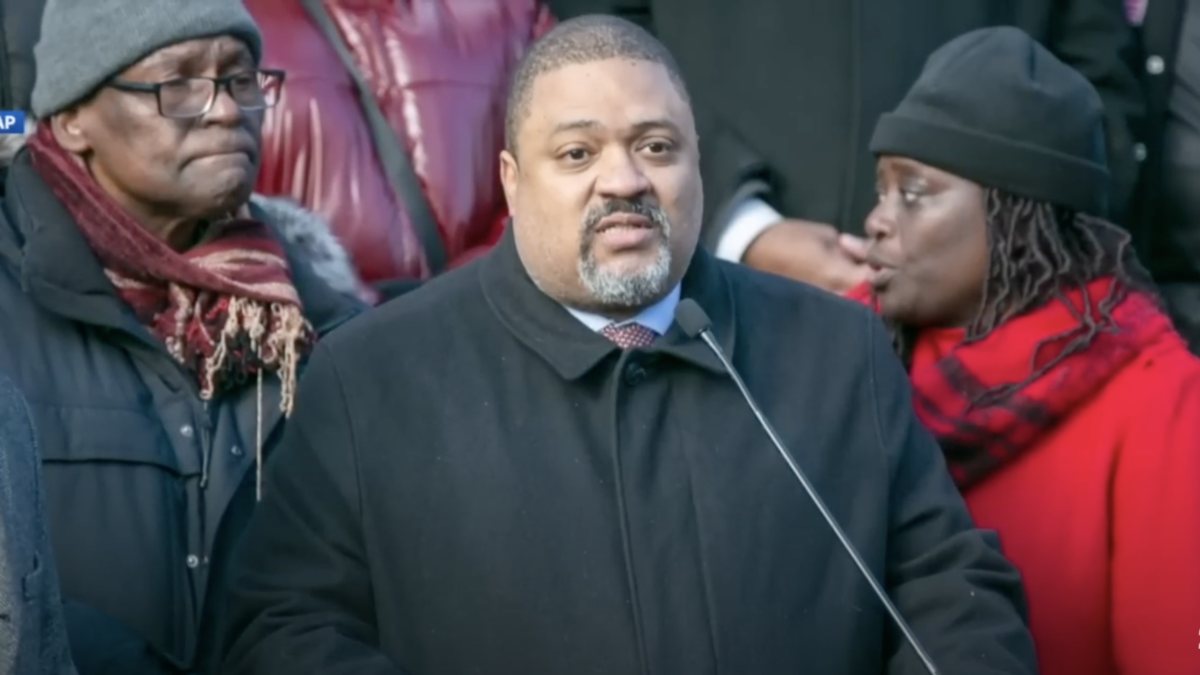When the Biden administration announced in 2022 that it would remove some 4 million acres of federal land in Western states from oil and gas exploration, environmental groups hailed the decision as a milestone in their fight against global warming.
“With the oil and gas industry bent on despoiling American’s public lands and fueling the climate crisis, this is a critical opportunity for the Biden administration to chart a new path toward clean energy and independence from fossil fuels,” said Jeremy Nichols, a director with WildEarth Guardians.
But Nichols could just as easily have slapped himself on the back: The administration’s move was part of a private settlement of a lawsuit filed by WildEarth and others over the objections of energy consortiums, whose efforts to intervene in the matter were dismissed.
A similar thing happened last August, when the Biden administration announced it had agreed to exclude 6 million acres of the energy-rich Gulf of Mexico seabed from exploration to settle a lawsuit brought by environmental groups, including the Sierra Club — an announcement that triggered operational delays for the industry and expensive litigation to overturn.
Administration critics say these moves reflect the resurgence of a practice embraced by the Obama administration and rejected during Donald Trump’s presidency: “sue and settle.” The tactic is simple: An advocacy group sues a federal agency for failing to enforce laws or regulations. Agency officials and the plaintiffs then come to a private agreement, and that deal is ratified by the courts via a binding consent decree.
The practice is common at every level of government. New York City, for example, is obligated to house and feed tens of thousands of migrants because of a consent decree it entered into to settle a 1979 lawsuit brought by advocates for the homeless. But it is most prevalent in the environmental field, where well-funded groups commonly sue the Environmental Protection Agency or the Bureau of Land Management within the Department of the Interior, alleging failure to enforce provisions of the Clean Air Act or regulations regarding federal leases for energy production.
Although such consent decrees do not have the force of laws passed by Congress or regulations issued by the government that have gone through formal review and allow for public comment, they set the rules of the road. Critics say it has allowed government to advance policy goals that cannot be achieved through normal democratic channels.
“It’s not really an adversarial lawsuit, and with a settlement agreement and consent decree the case is never really over,” said Dave Tryon, director of litigation at the free-market Buckeye Institute. “The EPA is anxious to increase its power and control; it’s always happy to expand that.”
The legal maneuver represents, according to this view, a return to the proverbial smoked-filled backrooms of politics. Huddled privately, without input from citizens or businesses that may be adversely affected by the decisions — let alone the public at large — lawsuits that often involve parties more simpatico than adversarial are settled. The plaintiffs and defendants are familiar to one another from years in the environmental lobbying and litigation world — and because of the “revolving door” between environmental groups and Democratic administrations. These like-minded players approach the issue seeking similar goals, a process that has only intensified with the Biden administration and leftist environmental groups sharing the belief that global warming is an existential threat.
“Overall, it’s harkening back to the bad old days — they do this in order to avoid scrutiny and bypass the regulatory process,” said Thomas Pyle, president of the American Energy Alliance, an advocacy arm of the Institute for Energy Research. “It’s a way to advance an agenda that may be rejected by voters. It’s a nefarious practice in which the agency and the environmental groups get what they want.”
Sue-and-settle is part of an even broader effort known as “lawfare,” in which political parties and advocacy groups seek to achieve their goals not through elections or legislation but in the courts. This encompasses everything from President Trump’s “stop the steal” efforts to overturn the 2020 election through the courts to myriad efforts by Democrats, whose lawfare campaigns have ranged from getting courts to confiscate Trump’s businesses and charge him criminally to removing him from the 2024 ballot.
Settlements are common in the courts. They are often welcomed as a way to avoid costly, protracted litigation while also clearing dockets. But sue-and-settle is different, said Paul Seby, an attorney with Greenberg Traurig in Denver, who often represents the state of North Dakota in energy matters.
“Those deals where someone is asked to enforce mandatory actions — that’s all legit and there’s no real beef with that,” Seby said. “The problem is when there is footsie going on between an agency of the Department of Justice and the non-governmental organization. That’s where they make a deal in a consent decree that says a department must do something more than just comply with some deadline they missed.”
The western states’ suit, filed in the D.C. federal circuit, is a good example, according to critics. The lawsuit was first filed against the Bureau of Land Management in 2016, alleging insufficient attention had been paid to global warming when approving leases in Wyoming, Utah, and Colorado. So the BLM and the states agreed to redo studies under the National Environmental Policy Act (NEPA), and, after concluding that the leases complied with the law, the Trump administration-led agency approved the leases again. Environmental groups filed another lawsuit in 2021, and Biden’s BLM settled the case, in effect giving the groups what they wanted.
“You can always do more ‘analysis’ as the environmental groups demand, and the usual remedy is to re-do the analysis,” said Kathleen Sgamma, president of the Western Energy Alliance, another industry consortium that sought to intervene in the case. “But instead of the small things, BLM will agree to reopen the whole resource management. In other words, BLM just agrees to do what the plaintiffs wanted.”
The Trump administration had moved to stop the practice. In 2017, then-EPA administrator Scott Pruitt issued a memo prohibiting the agency from entering into consent decrees with non-governmental actors and also began publicizing any such suit when it was filed. “The era of regulation through litigation is over,” Pruitt declared.
Those policies were rescinded by Biden’s EPA chief Michael Regan, who spent eight years as a vice president with an advocacy group involved in many such suits, the Environmental Defense Fund.
One sign of how the practice has taken off under the Biden administration is the explosion in plaintiffs’ legal fees as part of settlements — meaning taxpayers foot the bill for environmental lawsuits.
In the two years since the Biden administration lifted most of the Pruitt memo restrictions, those fees have jumped to almost $7 million, according to a January report from the fiscal watchdog group OpenTheBooks. That is nearly double the total of Trump’s four years of $3.6 million. It is also more than the $5.8 million in attorney fee payouts for suits brought under the Clean Air Act, the Clean Water Act, and the Endangered Species Act during Obama’s second term, OpenTheBooks found.
The EPA disputed the characterization that it has radically changed course under Biden. While it acknowledged Regan’s “litigation transparency memorandum revoked and replaced” Pruitt’s October 2017 memo, an EPA spokesperson insisted the agency “has not discontinued or rolled back and practices under Administrator Pruitt’s 2017 directive that the prior Administration had been maintaining.”
“EPA has taken steps to enhance public awareness of environmental claims against the Agency and to provide an opportunity for public review and comment on proposed settlement of those claims,” an agency spokesperson said.
But the EPA did not respond to RCI’s interview requests and did not answer questions about how many settlement agreements it may have reached overall with specific plaintiffs. So the exact number of consent decrees signed with them remains uncertain.
The EPA does have a place at its website that lists more than 500 lawsuits against it going back to the Obama administration. That shows that the significantly higher attorneys’ costs under Biden have happened with fewer settlements overall than in Obama’s second term or Trump’s term. An EPA collection of links to consent decrees is not formatted by date, and both congressional committees and attorneys for energy companies believe it is incomplete.
“There’s lawsuits sometimes we don’t know about and there are just so many cases where you would want or need to intervene,” said Sgamma of the Western Energy Alliance.
That intervention can sometimes succeed but it is expensive. In the Gulf of Mexico exploration settlement, a lawsuit filed by the American Petroleum Institute, the state of Louisiana, and Chevron managed to overturn the agreement reached between federal agencies and the environmental NGOs. That victory was upheld by the 5th Circuit Court of Appeals, and the lease sales went through in December — three months after the date initially mandated for them by Congress.
Most of the environmental groups RCI contacted did not respond to questions or an interview request — including the Sierra Club, the Center for Biological Diversity, and the Environmental Defense Fund. But the National Resources Defense Council defended its courtroom efforts.
“These steps and safeguards serve the public interest,” said John Walke, a senior attorney with the NRDC. “They provide the public direct opportunity to influence the scope of federal rules and safeguards. They ensure that agencies administer our laws in ways that achieve what Congress intended.”
Walke also noted the framework of suits and settlements is not new.
“The practice did not stop under the Trump administration, nor did it resume under the Biden administration,” he said. “It is a long-standing, common and unremarkable feature of the federal courts themselves, not unique to federal agencies at all.”
There is a historical irony in that the germ of sue-and-settle tactics came under Richard Nixon when advocacy groups were warning of “agency capture,” meaning the companies that various federal agencies regulate had allegedly come to control the bureaucrats charged with crafting policy. Thus, individual groups were given standing to file lawsuits against the federal government with the idea of empowering those groups that presumably lacked the political and lobbying muscle of big business.
On the environmental front, the policy became widespread during President Obama’s second term, when the EPA was run by Gina McCarthy, who later served as president and CEO of the National Resources Defense Council.
As McCarthy’s move from the EPA to the NRDC indicates, the players reaching the deal are generally familiar to each other. The NRDC and the Center for Biological Diversity, two litigious groups, currently have executives who previously served at the EPA or in the Obama White House in an environmental job.
It’s a tight network of federal appointees and executives of environmental advocacy groups. In addition to Regan, Lisa Garcia, the administrator for the EPA’s Region 2 covering New York, New Jersey, and other territory, was with EarthJustice after serving under McCarthy. Matthew Tejada, a senior vice president, and Christy Goldfuss, an executive director, both held positions in the Obama administration, as did Maggie Coulter, a senior attorney at the Center for Biological Diversity.
This cross-pollination between environmental regulatory agencies and the litigious groups also extends to the myriad “environmental law clinics” at law schools across the country.
“Usually, the federal government vigorously defends itself against lawsuits challenging its actions. But not always,” attorney Andrew Grossman, a partner with Baker Hostetler, testified to the House Subcommittee on the Constitution and Limited Government. “Sometimes regulators are only too happy to face collusive lawsuits by friendly ‘foes’ aimed at compelling government action that would otherwise be difficult or impossible to achieve.”
Whether blindsided by regulations the market never saw coming, or handcuffed by the blanket of inactivity a consent decree may throw over an area, the practice of sue-and-settle is a pernicious one, according to its critics.
“The whole thing is bypassing democracy because the litigation delegates power to outside groups,” said Walter Olson, a conservative legal scholar at the Cato Institute. “Because the consent decrees can set the future course of how agencies do business, it means that behind closed doors they are tying the hands of future voters and administrators. That’s not at all how it’s supposed to be.”
In addition, the very nature of the deals, struck between two sides firmly committed to the idea the economy should be pushed toward net zero emissions, reflects what is happening, according to critics. Given that plaintiffs and defendants share the same outlook on global warming and would like to put vast areas off-limits to oil and gas exploration, it is no surprise that is exactly what the settlements accomplish, said Sgamma.
Some believe legislation could reign in global warming lawfare, while empowering voters and taxpayers. House Republicans held at least two hearings on the tactic in 2023, the most recent last December — though critics note that the issue has been a political football at least since the Reagan administration.
In November, the House Committee on Oversight and Accountability announced it would investigate the EPA’s “use of secretive ‘sue-and-settle’ practices,” and how the Biden administration is “using sue-and-settle tactics to avoid congressional oversight and implement more burdensome regulations at the bidding of special interests.”
At the end of the year, a handful of Republican lawmakers introduced the No Regulation Through Litigation Act that would “codify that a federal agency cannot enter into a settlement agreement or consent decree that exceeds the authority of the court,” while also prohibiting the payment of attorneys’ fees in cases that result in such deals.
Despite congressional debate in the House, lawmakers proved reticent about discussing possible solutions to sue-and-settle. RCI reached out to all the Republicans and some Democrats on the committees who heard testimony about the matter last year, and Virginia Rep. Bob Good was the only representative to respond.
“The Obama administration often bypassed Congress, using sue and settle tactics to accomplish what they could not via the legislative process,” Good said. “Biden is continuing that unconstitutional legacy and weaponizing the government against the people.”
Similarly, the members of both the American Energy Alliance and the Western Energy Alliance are skittish about angering regulatory agencies and thus declined to discuss the matter.
“The way to solve this is by bringing more people and transparency into the process,” the Buckeye Institute’s Tryon said. “Now, it’s impossible to follow all the lawsuits, and we don’t even know all the things that are happening. With more openness it could be monitored more closely because now people who are afflicted by these settlements have no voice.”
This article was originally published by RealClearInvestigations.








